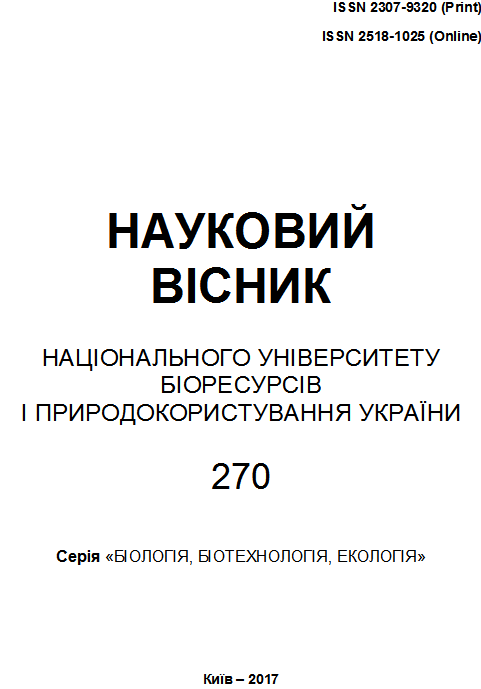BIOTECHNOLOGICAL FEATURES OF SEWAGE TREATMENT IN THE SUMY REGION
Abstract
We have evaluated different variants of the processes of aerobic biological treatment for waste water from the refinery, and we recommended the requirements for the quality of treated wastewater. Research shows that CASS TM technology exceeds other technologies of aerobic biological purification in terms of the total cost of the active substances life cycle and solves the problem of reverse water supply. A combination of two types of technologies that give optimum results for sewage, especially where organic impurities are in a relatively higher concentration. As a recommendation for sewage treatment, we propose the use of biopreparations as the most effective method for today.References
Ivanova T.V. Ecological Biotechnology: Theory and Practice. Vinnytsya, LLC «Nilan-LTD», 2015, 254 p. (In Ukrainian).
Ivanova T., Il’enko Y. Biological wastewater treatment of households in the Sumy region in the use of septic tanks. IV Allukr. Sci. Pract. Conf. Students, postgraduates and young scientists: Biotechnology: Excellence and Hope. Kyiv, 12-13May 2016. P. 72. (In Ukrainian).
Ivanova T., Kokoshko M. Biological wastewater treatment of households in the Sumy region in the use of septic tanks. IV Allukr. Sci. Pract. Conf. Students, postgraduates and young scientists: Biotechnology: Excellence and Hope. Kyiv, 12-13May 2016. P. 71. (In Ukrainian).
Henze, M. Harremoës, P. Jasen, J. Arvin, E. (1997) Basic Biological Processes. In Wastwater Treatment Biological and Chemical Processes. 2nd ed. (Springer-Verlag, Berlin), pp.55-112.
Strand, P. S. Fluorescamine assay. (Department of Biotechnology at NTNU, 2007) Tomlinson, T. Boon, A. Trotman, C. (1966) Inhibition of Nitrification in the Activated Sludge Process of Sewage Disposal. J. appl. Bact. 29 266-291.
Wanner, J. (1997) Microbial population dynamics in biological wastewater treatment plants. In Microbial community analysis: the key to the design of biological wastewater treatments systems. Cloete, T. Muyima, N. (Eds). (IAWQ, London), pp. 35-39.
Downloads
Published
Issue
Section
License
Relationship between right holders and users shall be governed by the terms of the license Creative Commons Attribution – non-commercial – Distribution On Same Conditions 4.0 international (CC BY-NC-SA 4.0):https://creativecommons.org/licenses/by-nc-sa/4.0/deed.uk
Authors who publish with this journal agree to the following terms:
- Authors retain copyright and grant the journal right of first publication with the work simultaneously licensed under a Creative Commons Attribution License that allows others to share the work with an acknowledgement of the work's authorship and initial publication in this journal.
- Authors are able to enter into separate, additional contractual arrangements for the non-exclusive distribution of the journal's published version of the work (e.g., post it to an institutional repository or publish it in a book), with an acknowledgement of its initial publication in this journal.
- Authors are permitted and encouraged to post their work online (e.g., in institutional repositories or on their website) prior to and during the submission process, as it can lead to productive exchanges, as well as earlier and greater citation of published work (See The Effect of Open Access).

